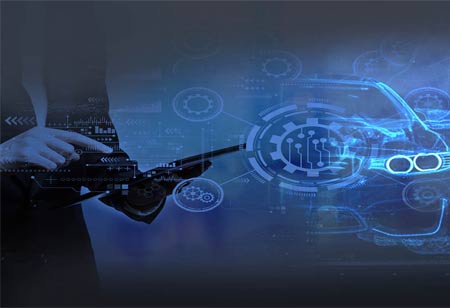THANK YOU FOR SUBSCRIBING
THANK YOU FOR SUBSCRIBING
Be first to read the latest tech news, Industry Leader's Insights, and CIO interviews of medium and large enterprises exclusively from Auto Tech Outlook

By
Auto Tech Outlook | Thursday, January 13, 2022
Stay ahead of the industry with exclusive feature stories on the top companies, expert insights and the latest news delivered straight to your inbox. Subscribe today.
Self-driving cars are gaining quite a momentum as it is an autonomous vehicle, with certain advantages and disadvantages attached to them.
FREMONT, CA: Autonomous cars are developing rapidly, and what once seemed like something out of a sci-fi movie is becoming a reality for many. Many vehicles are now equipped with semi-autonomous features, but fully driverless vehicles are still in the testing stages, with careful regulation and control.
Self-driving cars have various advantages that are elaborated as follows:
Eliminating human error: Around 95 percent of road traffic incidents are caused by human drivers. Despite best efforts, human drivers are fallible, distracted, and potentially dangerous. Human liability behind the wheel is not just a problem for other human drivers but also for autonomous vehicles.
Despite the low overall number of collisions, 99 percent of them can be attributed to human driving behavior in other nearby vehicles, according to IDTechEx's report. Driverless cars theoretically eliminate human error and other distractions during journeys by using clever algorithms and computer software.
Increasing independence for the elderly and disabled: Self-driving cars offer independence and freedom to people with disabilities who would not have been able to drive without assistance. It is safer for the elderly to drive autonomous vehicles since they don't have to concentrate as much.
Accidents and deaths are reduced: When computers are in control, there is a lesser number of accidents and deaths on roads. Road traffic accidents occur far more frequently than they should in the current situation, so this advantage is the most valuable for self-driving cars.
Getting rid of road rage: In addition to reducing tailgating and inconvenient or dangerous overtaking, driverless vehicles ensure everyone's journey is stress-free and without road rage. Aggression and confrontation are less likely to occur when reckless or irresponsible driving is not present.
Driving efficiency opportunities: Parallel parking can be difficult for even the most diligent drivers. Driverless cars offer automatic parking support, saving time so individuals can get on with their daily activities.
Along with the advantages of self-driving cars, there are some disadvantages attached to them:
Driving skills are forgotten: Driving is like riding a bike - once people learn it, they never forget it. Without the opportunity to polish their skills as they normally would, drivers risk losing their driving skills over time. What happens if the driver is unable to act quickly if the onboard computer software requires human attention? There will be a feeling of limited safety. Drivers may lose their natural alertness.
Hacking's dangers: The risk of hacking is always present with computer software and over-the-air communications. As vehicles become more connected, hackers could be able to take control of them while driving. It is also possible for hackers to track locations and steal drivers' personal information, posing a privacy risk.
 Copyright © 2025 AutoTech Outlook. All Rights Reserved | Privacy Policy | Subscribe | Sitemap | About us | Feedback Policy | Editorial Policy
Copyright © 2025 AutoTech Outlook. All Rights Reserved | Privacy Policy | Subscribe | Sitemap | About us | Feedback Policy | Editorial Policy 
However, if you would like to share the information in this article, you may use the link below:
https://www.autotechoutlookapac.com/news/how-selfdriving-cars-work-nwid-1216.html




